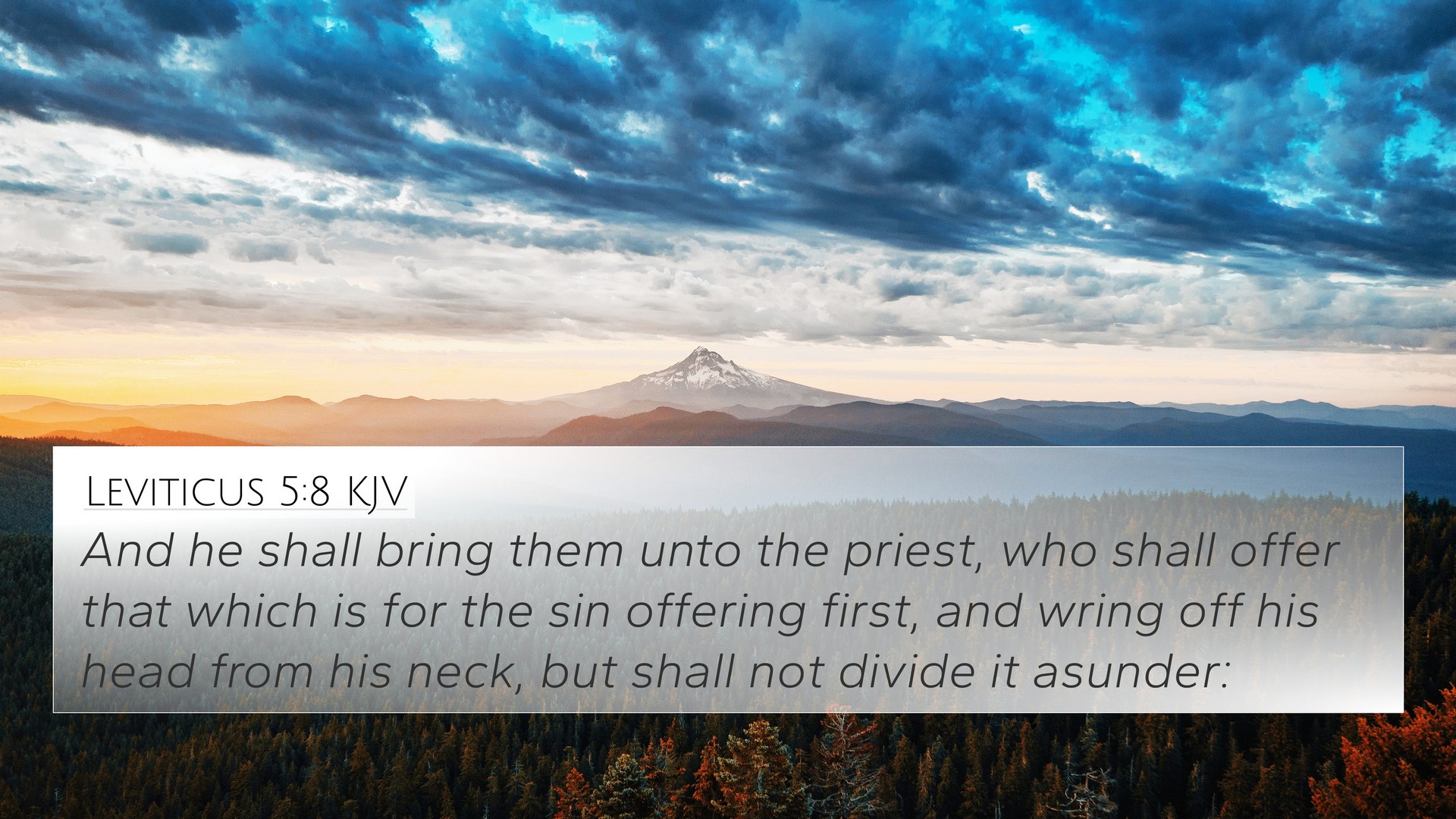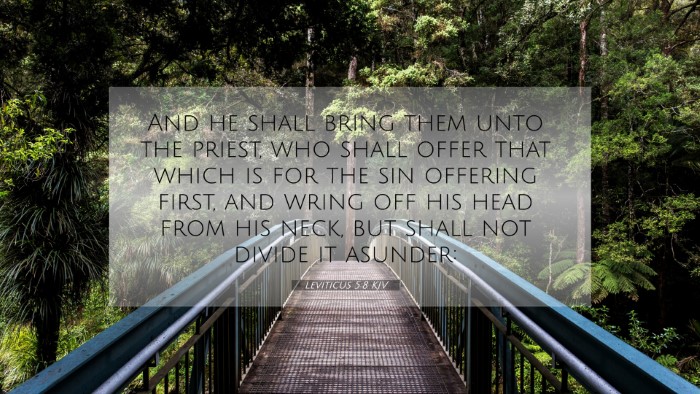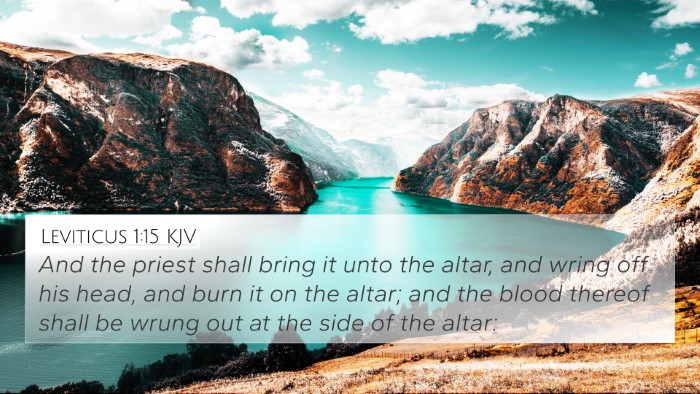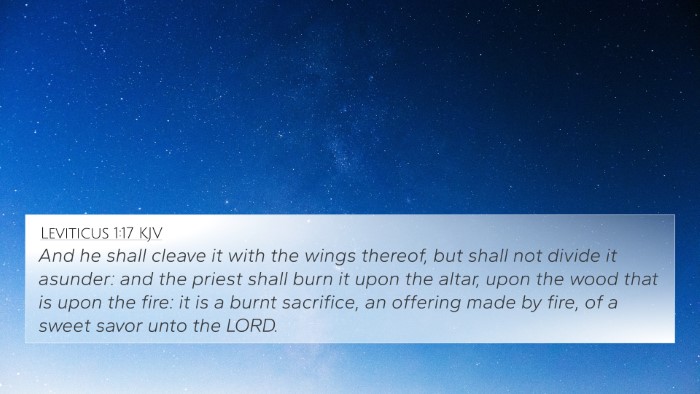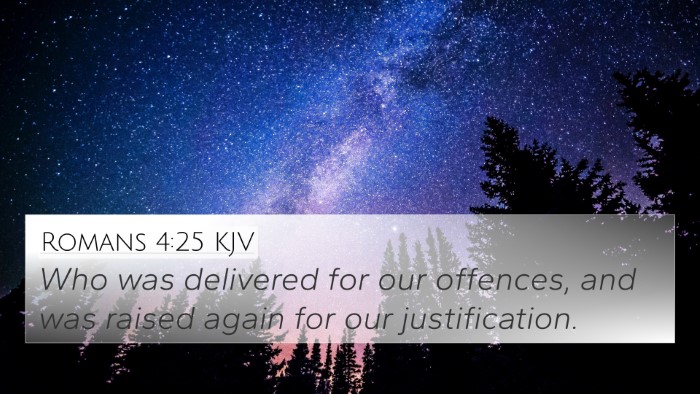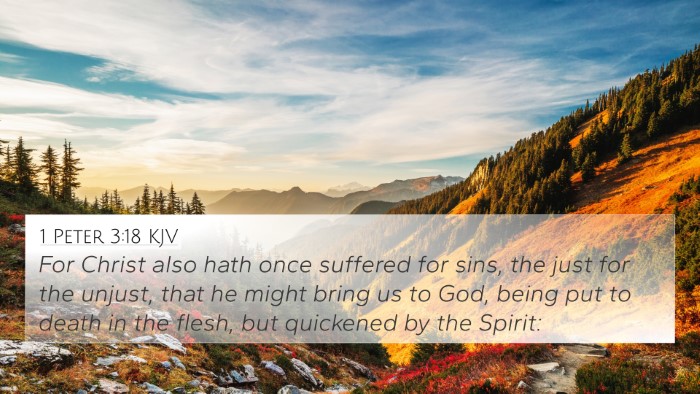Understanding Leviticus 5:8
Leviticus 5:8 states: “And he shall bring them unto the priest, who shall offer that which is for the sin offering first, and wring off his head from his neck, but shall not divide it asunder.” This verse deals with the sacrificial laws within the Israelite community, illustrating the seriousness of sin and the procedures for atonement.
Verse Interpretation
This scripture provides insights into the Levitical laws concerning sin offerings. God established these rituals as a means for His people to achieve forgiveness and maintain their covenant relationship with Him.
Insights from Commentators
- Matthew Henry: He emphasizes the necessity of approaching God with reverence and sincerity. Henry notes that the acts of bringing offerings and the roles of the priests served to underline the gravity of sin and the indispensable need for atonement.
- Albert Barnes: Barnes highlights the importance of bringing the offering to the priest. He explains that the priest acts as an intermediary, signifying the role of Christ as the High Priest in the New Covenant who mediates between God and humanity.
- Adam Clarke: Clarke observes the detailed instructions given to the priests regarding the sacrificial practices, underscoring the need for precision and adherence to God’s commandments. He also mentions the significance of the unbroken neck and what it symbolizes in terms of complete offering and surrender.
Thematic Connections
Leviticus 5:8 connects to various themes within the Bible, illustrating the broader truths about sin, sacrifice, and atonement. Here are several significant cross-references:
- Exodus 29:36: Discusses the continuous need for sacrifices for purification.
- Leviticus 4:32: Talks about the sin offering procedure, laying groundwork for this verse.
- Hebrews 9:22: Highlights the principle that without the shedding of blood, there is no remission of sin.
- Romans 6:23: Illustrates the concept of wages of sin contrasted with the gift of God.
- Hebrews 10:4: Explores the insufficiency of animal sacrifices in contrast to Christ's sacrifice.
- 1 Peter 1:19: Speaks of Christ being the Lamb without blemish, linking to the purity required in sacrifices.
- Leviticus 16:21: Discusses the scapegoat as a significant part of the atonement ritual, showing the transfer of sin.
Cross-References and Thematic Links
Analyzing these connections reveals a deeper understanding of the overarching narrative of redemption through the Bible:
- Linking Biblical Texts: Leviticus establishes a foundation that resonates throughout the New Testament, showcasing the significance of sacrifice culminating in Christ's atonement.
- Scriptural Cross-Referencing: The act of offering in Leviticus is echoed in the New Testament where Jesus' sacrifice fulfills the need for ritual sacrifices.
- Bible Verses that Relate to Each Other: A careful examination of Levitical laws alongside New Testament teachings invites believers to reflect on God's consistent call to holiness and obedience.
Bible Study Tools for Cross-Referencing
For those seeking an in-depth exploration of Biblical themes and connections, consider utilizing resources such as:
- Bible Concordance
- Bible Cross-Reference Guide
- Cross-Reference Bible Study tools
Conclusion
Leviticus 5:8 serves as a critical reminder of the seriousness of sin and the method set by God for atonement. The details surrounding the sin offering are fundamental to comprehending the larger context of biblical sacrifice and redemption.
